|
It is no secret that almost all of my photographic equipment is manufactured by Nikon.
There are of course some rare exceptions. The reasons are surely historical – my first reflex camera was the Nikkormat FTN, which I purchased in 1969, and since that time I stuck to this brand name for better and for worse.
Thirty years later, when entering the digital world, my first camera (that was really worthy of the name camera) was the Nikon CP990. At that time, it was highly popular and created a huge drive towards digital photography. It was ruling at the top (together with its predecessors CP800 and its derivatives) and proved that almost anything can be done with a P&S camera.
In the following years, a number of P&S cameras went through my hands, some of which were manufactured by Nikon and also by other manufacturers, but after I purchased my historical D100 in 2002, they were mainly used for digiscoping (connecting a digital camera to a telescope).
When the CP990 was my major camera, I attached to it a number of additional accessory lenses which were screwed onto the lens with a thread that later became standard – 28mm.
Over the years, and especially in the most recent years, the Nikon P&S cameras deteriorated. Nikon’s insolence or incompetence caused a significant fall in the sales of the P&S cameras and Nikon’s three competitors – Canon, Sony and Kodak (and also Olympus, HP and Fuji) left Nikon far behind.
In the last two years, when I was asked to recommend which type of P&S camera to buy, I did not recommend any of the Nikon cameras. I like Nikon equipment very much but I am not a blind follower. I used to recommend Canon to my friends, especially cameras of the “A” family, which in my opinion produced better results than the corresponding Nikon cameras.
It seems to me as if Nikon had given up on the P&S market, which it had created and had released cameras to the market just to fulfill some kind of obligation.
A few months ago, it was brought to my attention that Nikon is taking some steps to revive its glory. I was quite skeptical while waiting for the full details and finally, at the beginning of this year (2007), Nikon announced, in the PMA exhibition, several P&S digital cameras of which the Coolpix P5000 stood out.
When reviewing its specifications, it reminded me of Nikon’s glorious days. I waited patiently for the camera to arrive. After testing it, here are the results: This tiny camera can hide in your pocket, but each of its parameters reminds us of the Nikon’s DSLR cameras owned by a great number of photographers.
It weighs only 240gr, but just by touching it, one can perceive the amount of thought invested in this camera. It has a tiny but very useful handgrip. Its body (the chassis) is made of metal, unlike the painted plastic in other popular P&S cameras.
The buttons in-line at the rear of the camera, remind me of the Nikon DSLR buttons, and so do their functions.
Here are some details regarding the specifications: The camera uses a 10Mpixel sensor and has an optic zoom of x3.5 – from 36mm to 126mm (equivalent in the 35mm format). Not an exceptional zoom range relative to the huge super zoom cameras currently in the market. When looking at the test results it seems that Nikon chose this zoom range very wisely.
The super zoom lenses pay a heavy optical price in P&S cameras and Nikon wanted to avoid that price. The maximal aperture is 2.7 at the wide-angle state and it reaches 5.3 at the tele end.
The lens has an optical stabilizer – VR that is very effective.
The camera supports an external flash such as Nikon DSLRs use (the SB-800 and others) and furthermore, it integrates many functions taken from the D80 and the D200 – such as a function button that can be assigned for several objectives.
It has picture processing in the camera with the VIVID option and even black and white. The camera lets you control the form of photography – aperture priority, shutter prioroty, manual and automatic. In the SCENES menu, one can find some interesting options such as an AF that searches for faces (face priority), night shooting, night scenes, museums and so on.
It enables support of panoramic photography and even audio recording.
The speed range of its shutter is between 8 seconds and 1/2000 of a second, a very large range indeed. It lets you focus in four different ways - AF, Macro, Landscape (infinity) and minimal focus distance limiting. It allows you to select between spot, center-weighted, Matrix and AF spot area metering.
The camera claims to have an iso range between 64 and 3200(!) and lets you shoot at any resolution level – from 10Mp down to an Internet size of 640x480. It also lets you shoot at aspect ratios of 4:3, 3:2, 16:9 (the same as in movie films) and enables high quality video filming – at a full resolution of 640x480, at a rate of 30 frames a second.
The function that Nikon wisely added to this camera (unlike some other manufacturers) is an optical viewfinder in addition to the large and very detailed rear LCD screen. The viewfinder is very useful for saving energy, and also for shooting in bright lighting conditions during the day, when the LCD screen is ineffective.
It can also shoot macro at a distance of 4cm.
The camera has many more functions that I have not described here, but overall it seems promising. I tested it thoroughly, as if it was a DSLR and the following are the results. First of all, this is how the camera looks like: 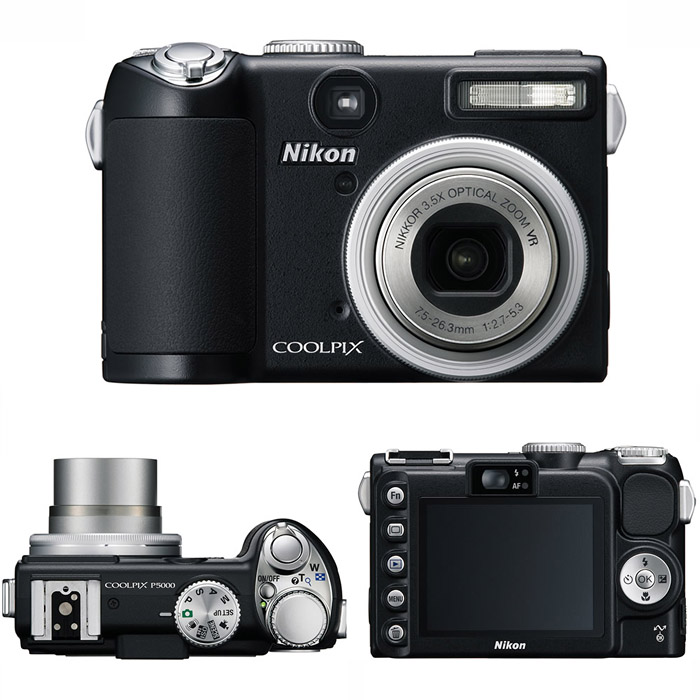 | | Color Space: 65535 |
Most of the pictures were taken in the automatic WB mode and in iso 64, unless otherwise specified. The camera reproduces rich and precise colors:  | | Model: COOLPIX P5000 Exposure Time: 1/47sec F Number: 4.7 Max Aperture Value: 4.5 Focal Length: 21.5mm Exposure Program: Aperture priority Exposure Bias Value: 0 ISO Speed Ratings: 64 Metering Mode: Center Weighted Average White Balance: Auto white balance Flash: Flash did not fire, compulsory flash mode Focal Length In 35mm Film: 103 Date Taken: 2007:04:20 08:37:35 Color Space: sRGB |
It produces a very nice bokeh with an open aperture:  | | Model: COOLPIX P5000 Exposure Time: 1/44sec F Number: 2.7 Max Aperture Value: 2.9 Focal Length: 7.5mm Exposure Program: Aperture priority Exposure Bias Value: 0 ISO Speed Ratings: 64 Metering Mode: Center Weighted Average White Balance: Auto white balance Flash: Flash did not fire, compulsory flash mode Focal Length In 35mm Film: 36 Date Taken: 2007:04:20 08:40:45 Color Space: sRGB |
Its ability to shoot in close-up is demonstrated in the following three pictures. The remnants of an anemone: 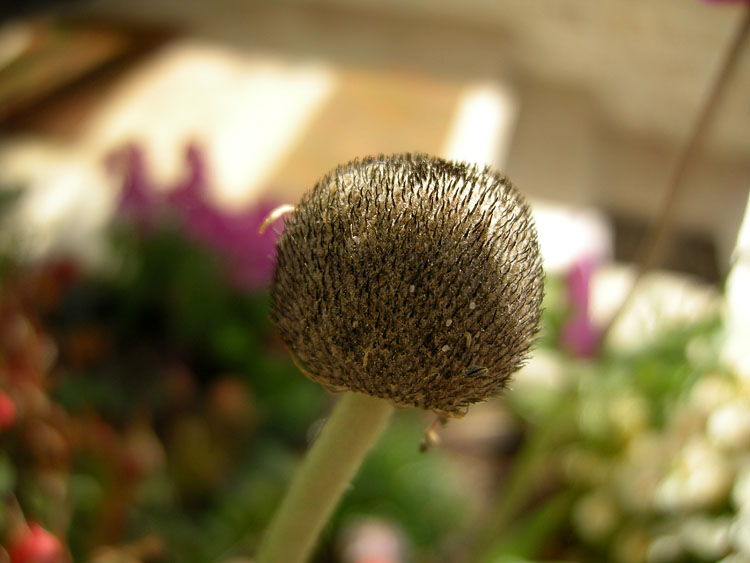 | | Model: COOLPIX P5000 Exposure Time: 1/355sec F Number: 2.7 Max Aperture Value: 2.9 Focal Length: 7.5mm Exposure Program: Aperture priority Exposure Bias Value: 0 ISO Speed Ratings: 64 Metering Mode: Center Weighted Average White Balance: Auto white balance Flash: Flash did not fire, compulsory flash mode Focal Length In 35mm Film: 36 Date Taken: 2007:04:20 08:36:59 Color Space: sRGB |
Lemon blossom:  | | Model: COOLPIX P5000 Exposure Time: 1/194sec F Number: 2.7 Max Aperture Value: 2.9 Focal Length: 7.5mm Exposure Program: Aperture priority Exposure Bias Value: 0 ISO Speed Ratings: 64 Metering Mode: Center Weighted Average White Balance: Auto white balance Flash: Flash did not fire, compulsory flash mode Focal Length In 35mm Film: 36 Date Taken: 2007:04:20 08:38:51 Color Space: sRGB |
The edge of a dry branch:  | | Model: COOLPIX P5000 Exposure Time: 1/210sec F Number: 2.7 Max Aperture Value: 2.9 Focal Length: 7.5mm Exposure Program: Aperture priority Exposure Bias Value: 0 ISO Speed Ratings: 64 Metering Mode: Center Weighted Average White Balance: Auto white balance Flash: Flash did not fire, compulsory flash mode Focal Length In 35mm Film: 36 Date Taken: 2007:04:20 08:41:47 Color Space: sRGB |
The camera deals very well with backlight (spot measuring on the tree and a strong backlight): 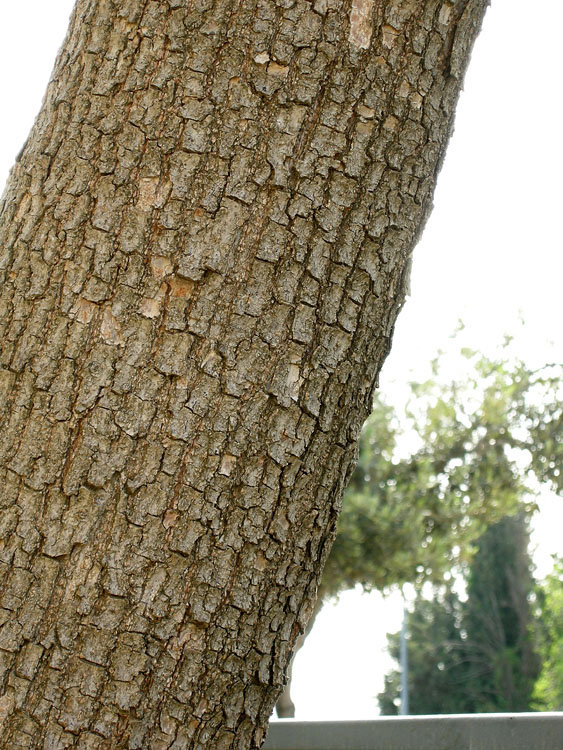 | | Model: COOLPIX P5000 Exposure Time: 1/41sec F Number: 5.3 Max Aperture Value: 4.8 Focal Length: 26.3mm Exposure Program: Aperture priority Exposure Bias Value: 0 ISO Speed Ratings: 64 Metering Mode: Spot White Balance: Auto white balance Flash: Flash did not fire, compulsory flash mode Focal Length In 35mm Film: 126 Date Taken: 2007:04:20 08:43:52 Color Space: sRGB |
A picture including the sun in the frame does not create flare that overly disturbs (flare is one of the known shortcomings of cheap P&S cameras): 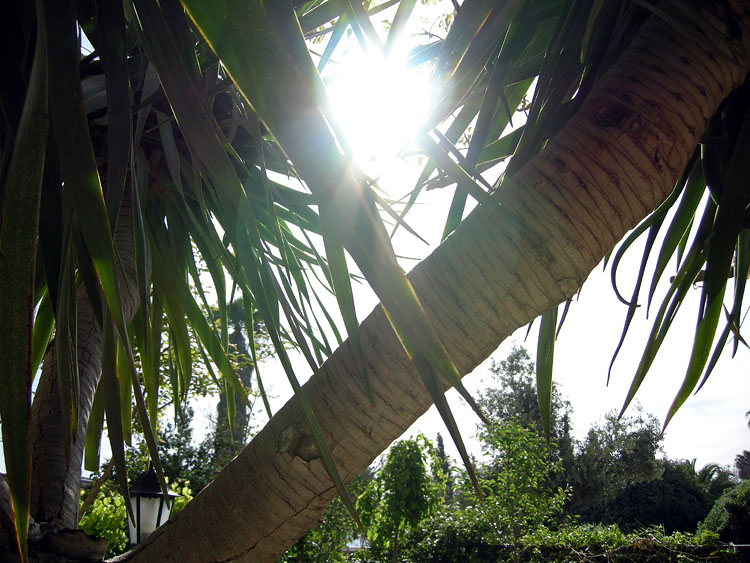 | | Model: COOLPIX P5000 Exposure Time: 1/1000sec F Number: 2.7 Max Aperture Value: 2.9 Focal Length: 7.5mm Exposure Program: Aperture priority Exposure Bias Value: 0 ISO Speed Ratings: 64 Metering Mode: Center Weighted Average White Balance: Auto white balance Flash: Flash did not fire, compulsory flash mode Focal Length In 35mm Film: 36 Date Taken: 2007:04:20 08:35:04 Color Space: sRGB |
The lens is practically free of spherical distortions, unnoticeable to the eye and has almost no lateral CA (CA and purple fringes at the picture edges):  | | Model: COOLPIX P5000 Exposure Time: 1/1000sec F Number: 2.7 Max Aperture Value: 2.9 Focal Length: 7.5mm Exposure Program: Aperture priority Exposure Bias Value: 0 ISO Speed Ratings: 100 Metering Mode: Partial White Balance: Auto white balance Flash: Flash did not fire, compulsory flash mode Focal Length In 35mm Film: 36 Date Taken: 2007:04:20 10:34:31 Color Space: sRGB |
Its VR capability is impressive – a picture taken with the camera in the hand, elbows resting on a surface at the tele state, at a speed of about 1/3 of a second, produced a very sharp result:  | | Model: COOLPIX P5000 Exposure Time: 1/3sec F Number: 5.8 Max Aperture Value: 4.8 Focal Length: 26.3mm Exposure Program: Aperture priority Exposure Bias Value: 0 ISO Speed Ratings: 100 Metering Mode: Partial White Balance: Auto white balance Flash: Flash did not fire, compulsory flash mode Focal Length In 35mm Film: 126 Date Taken: 2007:04:20 10:37:26 Color Space: sRGB |
And also a picture taken in the black and white mode of the same scene is quite impressive – especially the excellent levels of grays resembling the film days to some extent: 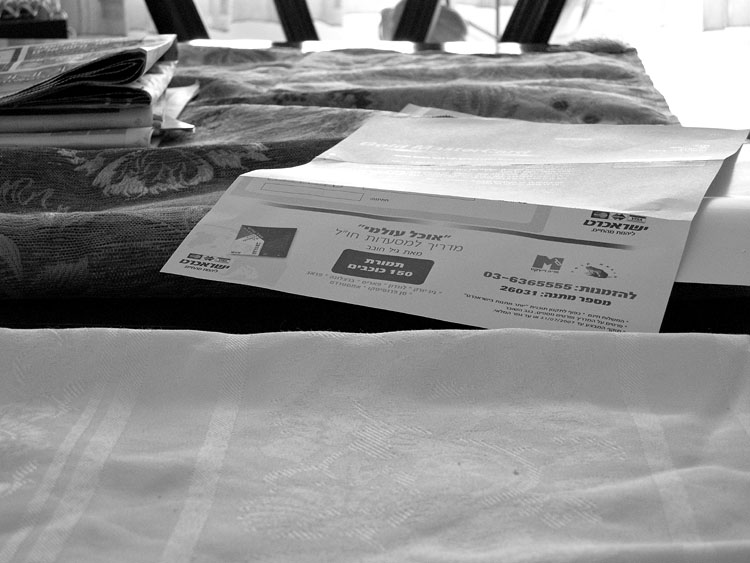 | | Model: COOLPIX P5000 Exposure Time: 1/17sec F Number: 4.8 Max Aperture Value: 4.2 Focal Length: 18.6mm Exposure Program: Aperture priority Exposure Bias Value: 0 ISO Speed Ratings: 400 Metering Mode: Partial White Balance: Auto white balance Flash: Flash did not fire, compulsory flash mode Focal Length In 35mm Film: 89 Date Taken: 2007:04:20 10:40:22 Color Space: sRGB |
The optics is as excellent as Nikon can produce. The sharpness is superb at the wide-angle state with an open aperture:  | | Model: COOLPIX P5000 Exposure Time: 1/210sec F Number: 2.7 Max Aperture Value: 2.9 Focal Length: 7.5mm Exposure Program: Aperture priority Exposure Bias Value: 0 ISO Speed Ratings: 64 Metering Mode: Center Weighted Average White Balance: Auto white balance Flash: Flash did not fire, compulsory flash mode Focal Length In 35mm Film: 36 Date Taken: 2007:04:20 08:43:07 Color Space: sRGB |
And also at the tele state, when shooting in close range, the sharpness is superb: 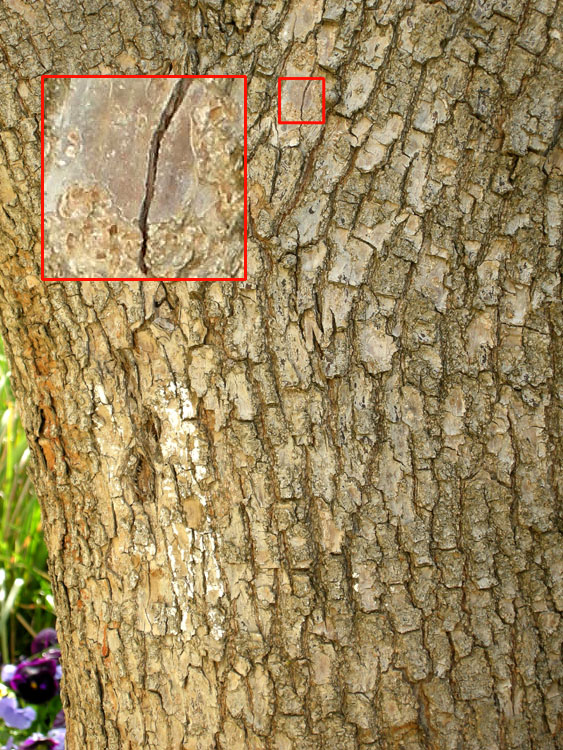 | | Model: COOLPIX P5000 Exposure Time: 1/51sec F Number: 5.3 Max Aperture Value: 4.8 Focal Length: 26.3mm Exposure Program: Aperture priority Exposure Bias Value: 0 ISO Speed Ratings: 64 Metering Mode: Center Weighted Average White Balance: Auto white balance Flash: Flash did not fire, compulsory flash mode Focal Length In 35mm Film: 126 Date Taken: 2007:04:20 08:43:13 Color Space: sRGB |
When shooting in the far-range at the tele state – the picture comes out very sharp: 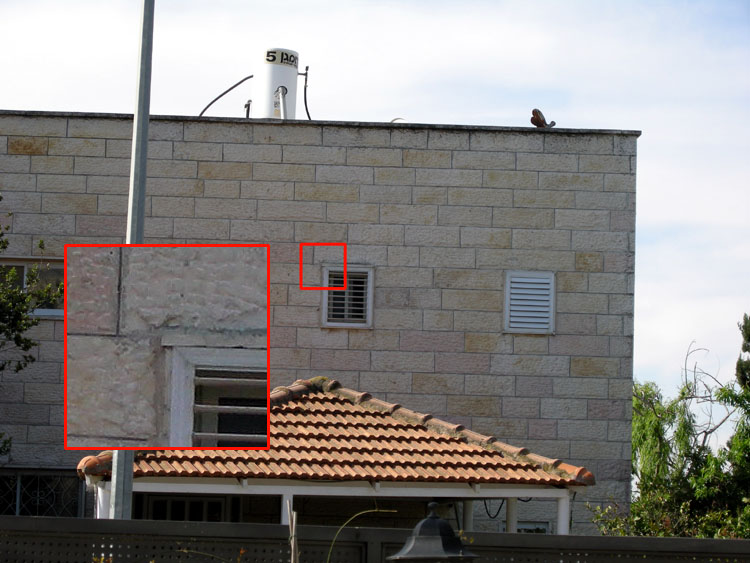 | | Model: COOLPIX P5000 Exposure Time: 1/212sec F Number: 5.3 Max Aperture Value: 4.8 Focal Length: 26.3mm Exposure Program: Aperture priority Exposure Bias Value: 0 ISO Speed Ratings: 64 Metering Mode: Center Weighted Average White Balance: Auto white balance Flash: Flash did not fire, compulsory flash mode Focal Length In 35mm Film: 126 Date Taken: 2007:04:20 08:42:43 Color Space: sRGB |
To my great joy, the camera, together with an adapter called the UR-E20, accepts all the historical Nikon 28mm accessories I own (some of which still exist today).
I successfully managed to attach the fish eye adapter, a lens that creates a wide angle, and a tele lens. Suddenly, the optical equipment hidden in my drawers for seven years has become practical!
We will now step through pictures from the widest-angle state on the maximal tele state using all the accessories. With the fish-eye adapter, the FC-E8 we obtain a characteristic picture to a circular fish-eye lens with a visible angle of 180 degrees. It is equal to an 8mm lens on a full frame 35mm camera (FF).
We can even see the shadow of the photographer and the feet of the tripod: 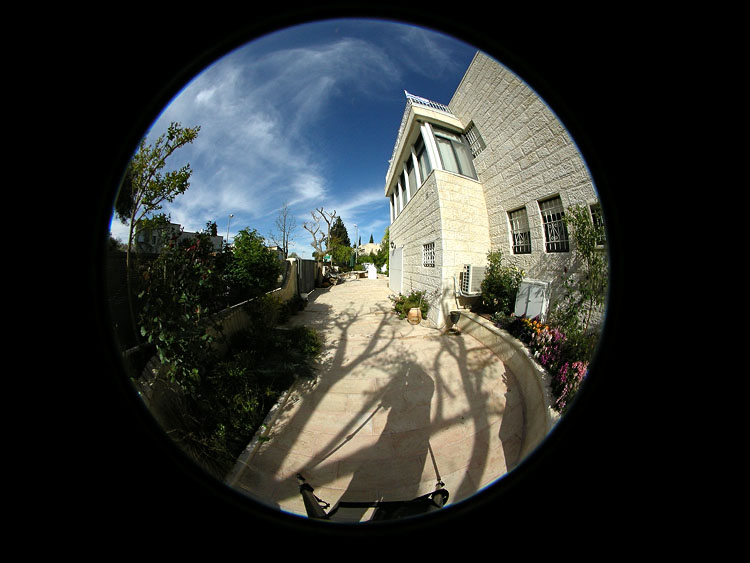 | | Model: COOLPIX P5000 Exposure Time: 1/313sec F Number: 6.8 Max Aperture Value: 2.9 Focal Length: 5mm Exposure Program: Aperture priority Exposure Bias Value: 0 ISO Speed Ratings: 64 Metering Mode: Partial White Balance: Auto white balance Flash: Flash did not fire, compulsory flash mode Focal Length In 35mm Film: 24 Date Taken: 2007:04:20 08:50:25 Color Space: sRGB |
When using software to straighten out the picture, we can see this huge angle: 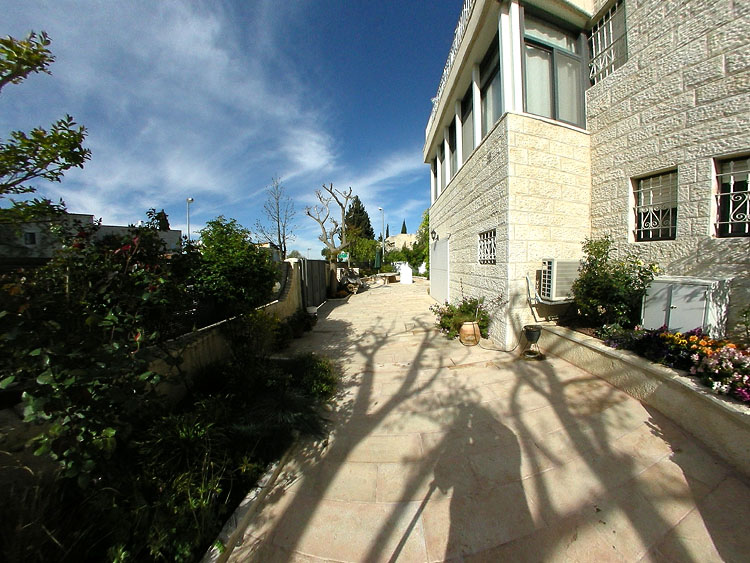 | | Model: COOLPIX P5000 Exposure Time: 1/313sec F Number: 6.8 Max Aperture Value: 2.9 Focal Length: 5mm Exposure Program: Aperture priority Exposure Bias Value: 0 ISO Speed Ratings: 64 Metering Mode: Partial White Balance: Auto white balance Flash: Flash did not fire, compulsory flash mode Focal Length In 35mm Film: 24 Date Taken: 2007:04:20 08:50:25 Color Space: sRGB |
When connecting a wide-angle adapter, the WC-E63, we obtain a wide angle that is equal to about 22mm on an FF camera:  | | Model: COOLPIX P5000 Exposure Time: 1/573sec F Number: 5.4 Max Aperture Value: 2.9 Focal Length: 5mm Exposure Program: Aperture priority Exposure Bias Value: 0 ISO Speed Ratings: 64 Metering Mode: Partial White Balance: Auto white balance Flash: Flash did not fire, compulsory flash mode Focal Length In 35mm Film: 24 Date Taken: 2007:04:20 08:53:38 Color Space: sRGB |
The camera can identify the type of lens that is attached and can even cancel optical aberrations automatically. In addition, one can zoom through the fish-eye lens (!) and the wide angle lens – which is an additional bonus. The optical quality slightly drops during the zoom actions in these lenses. Let’s carry on. The camera itself with its angle of visibility equivalent to a 36mm:  | | Model: COOLPIX P5000 Exposure Time: 1/356sec F Number: 7.6 Max Aperture Value: 2.9 Focal Length: 7.5mm Exposure Program: Aperture priority Exposure Bias Value: 0 ISO Speed Ratings: 64 Metering Mode: Partial White Balance: Auto white balance Flash: Flash did not fire, compulsory flash mode Focal Length In 35mm Film: 36 Date Taken: 2007:04:20 08:55:04 Color Space: sRGB |
And in its tele state – a focal length equivalent to 126mm:  | | Model: COOLPIX P5000 Exposure Time: 1/251sec F Number: 7.3 Max Aperture Value: 4.8 Focal Length: 26.3mm Exposure Program: Aperture priority Exposure Bias Value: 0 ISO Speed Ratings: 64 Metering Mode: Partial White Balance: Auto white balance Flash: Flash did not fire, compulsory flash mode Focal Length In 35mm Film: 126 Date Taken: 2007:04:20 08:55:29 Color Space: sRGB |
When attaching the tele adapter, we get a x3 focal length with the TC-E3ED adapter – equivalent to 378mm, with picture stabilization: 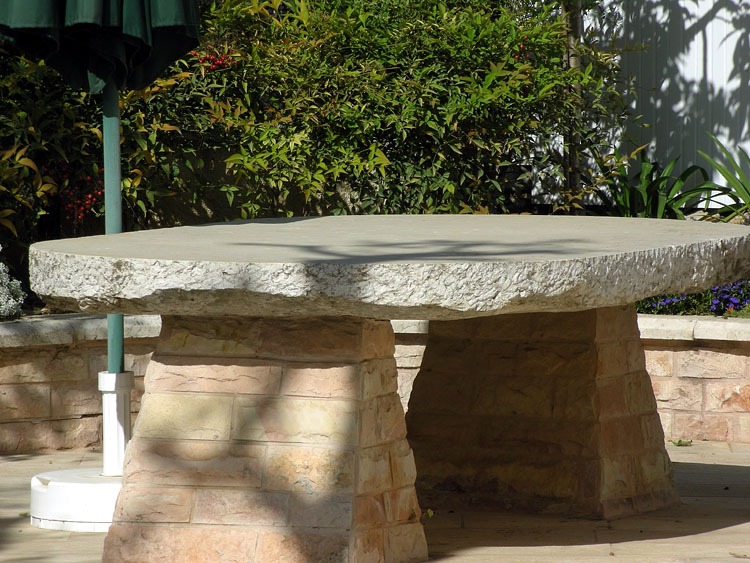 | | Model: COOLPIX P5000 Exposure Time: 1/390sec F Number: 7.3 Max Aperture Value: 4.8 Focal Length: 78.9mm Exposure Program: Aperture priority Exposure Bias Value: 0 ISO Speed Ratings: 64 Metering Mode: Partial White Balance: Auto white balance Flash: Flash did not fire, compulsory flash mode Focal Length In 35mm Film: 378 Date Taken: 2007:04:20 08:56:44 Color Space: sRGB |
The camera works excellently as a digiscoping camera. Using the adapter, I managed to connect it to my Swarovski ST 80HD telescope and to other scopes I have. The subject is in the square and the picture was taken without the telescope at the maximal focal length of 126mm: 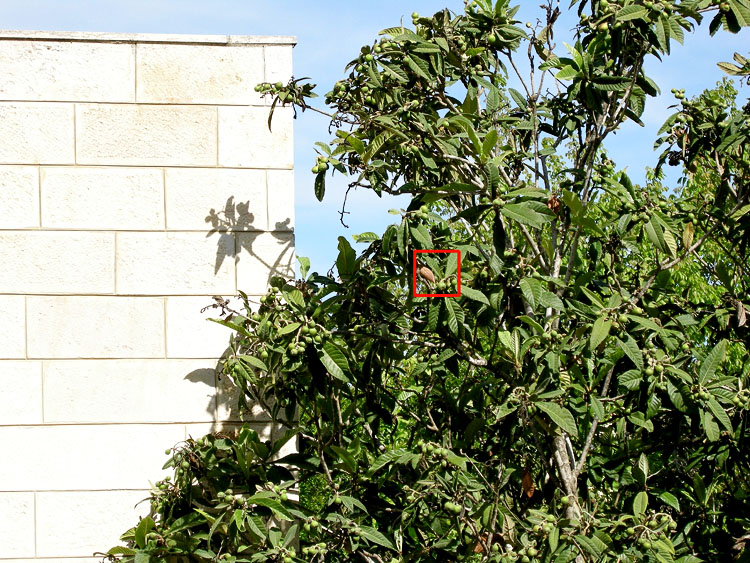 | | Model: COOLPIX P5000 Exposure Time: 1/392sec F Number: 5.3 Max Aperture Value: 4.8 Focal Length: 26.3mm Exposure Program: Aperture priority Exposure Bias Value: 0 ISO Speed Ratings: 100 Metering Mode: Partial White Balance: Auto white balance Flash: Flash did not fire, compulsory flash mode Focal Length In 35mm Film: 126 Date Taken: 2007:04:20 09:33:53 Color Space: sRGB |
With the eyepiece set at the x20 state, we get a focal length of 2560mm:  | | Model: COOLPIX P5000 Exposure Time: 1/159sec F Number: 5.3 Max Aperture Value: 4.8 Focal Length: 26.3mm Exposure Program: Aperture priority Exposure Bias Value: 0 ISO Speed Ratings: 100 Metering Mode: Partial White Balance: Auto white balance Flash: Flash did not fire, compulsory flash mode Focal Length In 35mm Film: 126 Date Taken: 2007:04:20 09:23:15 Color Space: sRGB |
And with the eyepiece at the x60 state, we get a focal length of 7560mm: 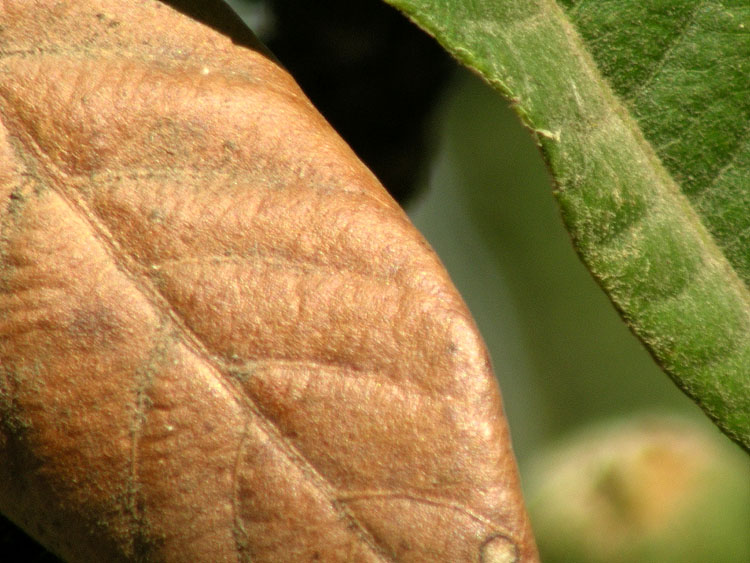 | | Model: COOLPIX P5000 Exposure Time: 1/42sec F Number: 5.3 Max Aperture Value: 4.8 Focal Length: 26.3mm Exposure Program: Aperture priority Exposure Bias Value: 0 ISO Speed Ratings: 100 Metering Mode: Partial White Balance: Auto white balance Flash: Flash did not fire, compulsory flash mode Focal Length In 35mm Film: 126 Date Taken: 2007:04:20 09:26:51 Color Space: sRGB |
The VR system greatly assisted in obtaining a sharp picture. The camera was activated with a releasing cable and a cable releasing adapter that cost me about two pounds in England. The camera itself does not have a remote control, but one can take a picture with the self shooting delay – what a pity.
In addition, it is difficult to see the screen in daylight, and it is recommended to construct a square pipe made out of cardboard paper, black painted, which can be placed over the screen with a rubber band acting as a sun shade.
I have one from long ago which I used for these telescope shots. There are commercial sun shades but the home made one works fine.
This does not present a problem for regular photography since there is an optical eyepiece, but it is not practical with additional accessory lenses and telescopes.
We will get on to the iso tests. The camera claims to have an iso range between 64 and 3200, we shall now see what it is capable of.
The scene that had been chosen included gray elements that emphasize the noise, as well as colored elements. I canceled the noise elimination option in the camera and the following is the picture as it is with the yellow square around the area selected for crops:  | | Model: COOLPIX P5000 Exposure Time: 1/8sec F Number: 7.3 Max Aperture Value: 4.8 Focal Length: 26.3mm Exposure Program: Aperture priority Exposure Bias Value: 0 ISO Speed Ratings: 64 Metering Mode: Partial White Balance: Auto white balance Flash: Flash did not fire, compulsory flash mode Focal Length In 35mm Film: 126 Date Taken: 2007:04:20 08:59:36 Color Space: sRGB |
The next picture includes eight crops of 100% at different iso levels, beside each other: 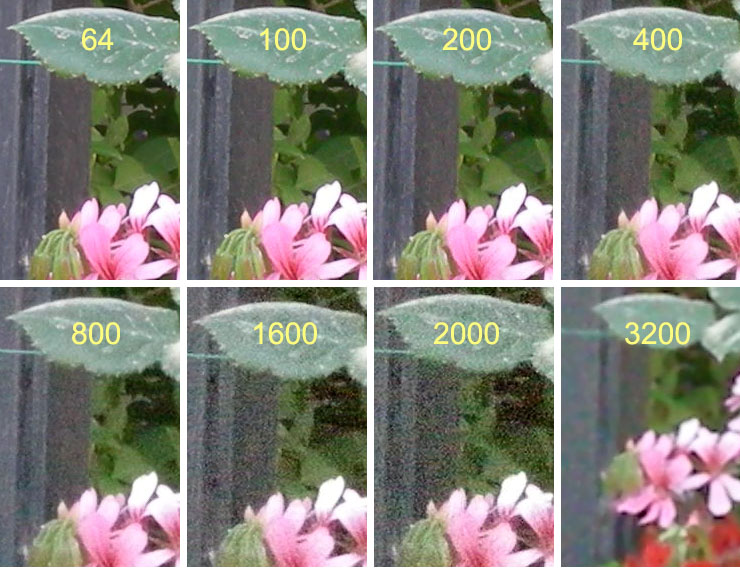 | | Color Space: 65535 |
The picture taken at an iso of 3200 was massively and automatically cleared of noise in the camera and was reduced to a size of 5Mp. The user cannot control this.
The results show that the camera is efficient at the iso range of 64-800, without loosing detail. A slight clean up of the noise can be done using computer software (I tried it and it is very efficient) even at the higher iso level – up to 2000 one obtains pictures that can be enlarged to A4 in size. The full picture taken at a 3200 iso looks like this:  | | Model: COOLPIX P5000 Exposure Time: 1/481sec F Number: 7.3 Max Aperture Value: 4.8 Focal Length: 26.3mm Exposure Program: Aperture priority Exposure Bias Value: 0 ISO Speed Ratings: 3200 Metering Mode: Partial White Balance: Auto white balance Flash: Flash did not fire, compulsory flash mode Focal Length In 35mm Film: 126 Date Taken: 2007:04:20 09:01:14 Color Space: sRGB |
And there is no problem to print a 10x15cm size but not beyond – and also send it to friends through the Internet. There is no doubt that Nikon performed a virtuosic job here by clearing the noise on a sensor, which is only about 5x7mm in size. It wouldn’t surprise me if this technology reaches Nikon’s future DSLRs.
Visually, not scientifically, there is a difference of one to two iso positions between the P5000 and some of Nikon’s DSLR cameras. This is a great achievement to the noise cleaning ability of the camera. And what would be the bottom line? Nikon created a "mini DSLR" with a few restrictions characteristic of P&S cameras (especially the large depth of field due to the small lens) that can do a great job. The optics is superb; there are additive accessories if a wide lens or a longer lens is needed (in the tests we saw a range between 8mm and almost 400mm, using these accessories). It is not fast in its response, and its shooting rate is also quite low – some of the disadvantages of the P&S. Its price is very reasonable (less than $400) and in my opinion it is located in the top league of the current digital P&S cameras, thanks to its built-in functions and multiple options. Nikon assimilated many of the functions of the DSLR cameras, including S&H processing to lighten dark areas in the picture after taking it (!). It is a pity that it does not have a turning screen or body as do the old CoolPix cameras and that it does not have a remote controller, which would be very helpful for digiscoping, but these problems can be overcome quite easily. I hope this will reinstate the glorious days of Nikon in the P&S world and will not only be a passing anecdote. A recommended work of art! |





